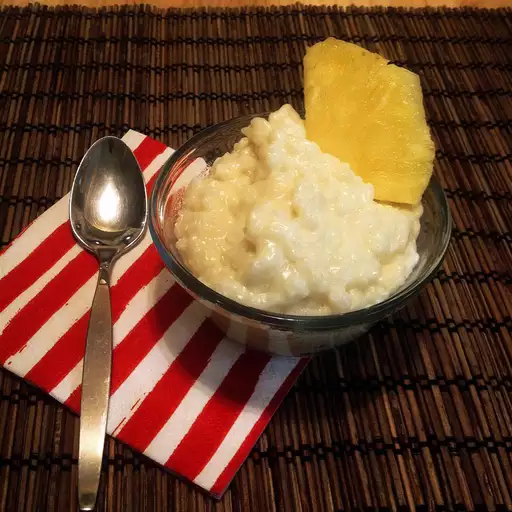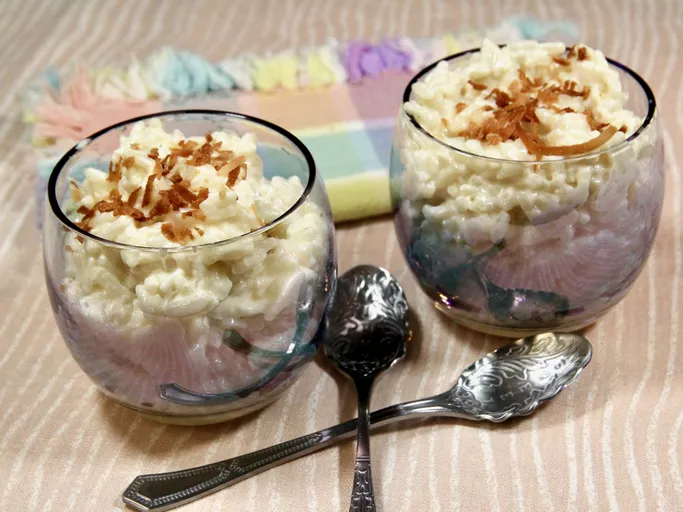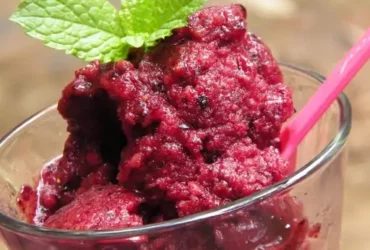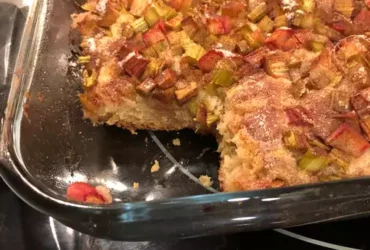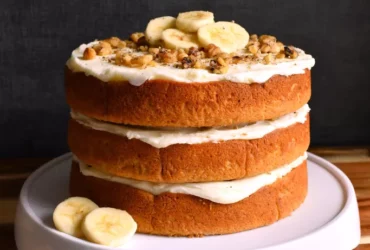Ingredients
Cooking Essentials
When it comes to making delicious desserts like coconut rice pudding, having the right ingredients and cooking essentials is crucial for achieving success. Here are some key ingredients and kitchen tools you’ll need:
Ingredients
- 2 cups uncooked white or brown rice
- 3 cups water or a combination of water and coconut milk
- 1 cup shredded fresh coconut
- 1/4 cup granulated sugar (or to taste)
- 1/4 teaspoon salt
- 1/2 teaspoon ground cinnamon (optional)
- 1/4 teaspoon ground nutmeg (optional)
- 1/4 teaspoon vanilla extract (optional)
- 2 tablespoons unsalted butter or coconut oil (optional)
Cooking Essentials
- A large saucepan with a heavy bottom for even heat distribution
- A medium-sized bowl for whisking and mixing ingredients
- A wooden spoon or silicone spatula for stirring and scraping the sides of the pan
- A fine-mesh strainer or cheesecloth for straining the pudding, if desired
- A glass or ceramic serving dish for chilling and serving the pudding
- A hand mixer or whisk for whipping heavy cream (optional)
With these ingredients and cooking essentials on hand, you’re ready to start making your coconut rice pudding. Simply combine the rice and water in a saucepan and bring to a boil. Reduce the heat to low, cover, and cook until the liquid has been absorbed and the rice is tender. Stir in the shredded coconut, sugar, salt, cinnamon, nutmeg, and vanilla extract (if using). Cook for an additional 5-10 minutes, or until the mixture has thickened slightly. Remove from heat and let cool to room temperature. Cover with plastic wrap or aluminum foil and refrigerate for at least 2 hours or overnight.
1 cup of uncooked white or brown rice, preferably short grain rice for creamier pudding.
Rice is a staple ingredient in many cuisines around the world, and in this recipe for Coconut Rice Pudding, it plays a crucial role in creating a rich and creamy dessert.
The first key aspect to consider when selecting rice for this recipe is the type of grain used. We recommend using either white or brown shortgrain rice, as its higher starch content will yield a creamier pudding.
Shortgrain rice has a shorter length than longgrain varieties, which means it contains more moisture and a higher concentration of starches that will help thicken the mixture during cooking.
This type of rice is particularly well-suited for creamy desserts like puddings because its starches break down easily when cooked, creating a smooth and velvety texture.
Using shortgrain rice also helps to balance out the flavors in the pudding by providing a subtle sweetness that complements the richness of the coconut milk.
The next time you make Coconut Rice Pudding, keep in mind that using high-quality shortgrain rice will result in a more authentic and delicious dessert that your family and friends are sure to love!
3 cups of water
To make the coconut rice pudding recipe, you will need three cups of water. This water serves as a base for the liquid content of the pudding, allowing it to achieve its creamy consistency.
The water will be combined with other ingredients such as cooked rice, coconut milk, and flavorings like vanilla or cinnamon to create the rich texture and taste of the final product.
Three cups of water is a significant amount and can seem excessive at first glance. However, this volume is crucial in producing the right balance of liquid and solid components in the pudding.
It’s also worth noting that the type of water used could affect the flavor and overall quality of the final dish. For instance, using filtered or distilled water may produce a purer taste compared to tap water.
The importance of accurate measurements cannot be overstated when cooking with liquid ingredients like water. Even minor variations in quantity can significantly alter the texture and consistency of the finished pudding.
1/4 teaspoon of salt
In the Coconut Rice Pudding Recipe, one key ingredient to note is the amount of salt used – a mere 1/4 teaspoon.
This small but essential quantity adds depth and balance to the dish, which might seem surprising considering its typically sweet nature.
Here are some points to consider about this minuscule yet significant addition:
- The type of salt used can greatly impact the flavor. Consider using a finer-grain salt like sea salt or kosher salt for better distribution and taste.
- A pinch of salt enhances sweetness perception, meaning you may find that less sugar is required in the recipe as a result.
- Salt plays a crucial role in balancing flavors and preventing over-acidification by rice, which can become overly sharp or unpleasantly so without it.
- The minimal use of salt preserves the delicate nature of coconut, ensuring that its natural sweetness remains intact.
When working with such a small quantity, precision is key. Use an accurate digital scale to measure out exactly 1/4 teaspoon for optimal results.
Instructions
Cooking Rice and Coconut Milk Blend
To make the perfect coconut rice pudding, you will need to follow a series of instructions that combine cooking rice with coconut milk. This process may seem intimidating at first, but by breaking it down into smaller steps, you can master this delicious dessert.
The first step is to cook your rice according to package instructions. Typically, this involves combining the rice and water in a saucepan, bringing it to a boil, then reducing the heat and allowing it to simmer for about 15-20 minutes or until all the water has been absorbed. Make sure to rinse your rice thoroughly before cooking to remove any excess starch.
While the rice is cooking, you can prepare the coconut milk blend. In this case, we will be using full-fat coconut milk as it adds a rich and creamy texture to our pudding. You can use canned or cartoned coconut milk for this recipe, but ensure that it’s unsweetened and without any additives.
Once your rice is cooked, turn off the heat and set it aside to cool slightly. In a separate saucepan, combine 1/4 cup of sugar with 2 tablespoons of cornstarch (for thickening) over medium heat, stirring constantly to prevent lumps from forming. Cook this mixture for about 5 minutes or until it turns light golden brown.
Add in the full-fat coconut milk and stir until well combined. Continue cooking the mixture on medium heat for an additional 2-3 minutes, stirring frequently. Remove the saucepan from the heat once it starts to thicken and forms a smooth consistency.
Finally, add your cooked rice to the saucepan with the coconut milk blend. Stir everything together until the rice is well coated with the coconut mixture. Let this combination cool down to room temperature or refrigerate for at least an hour before serving. Garnish with toasted nuts or shredded coconut if desired!
Mix cooked rice, coconut milk, sugar, and a pinch of salt in a large saucepan.
To make this delicious Coconut Rice Pudding, you’ll need to start by combining cooked rice, coconut milk, sugar, and a pinch of salt in a large saucepan.
Mix together about 2 cups of cooked white or brown rice, 1 can (14 oz) of full-fat coconut milk, and 1/4 cup of granulated sugar.
Add a pinch of salt to taste, about 1/4 teaspoon. You can adjust the amount of salt according to your preference.
Stir the mixture well to ensure that all the ingredients are evenly combined.
Cook the mixture over medium heat, stirring constantly, until the sugar has dissolved and the mixture is heated through.
Reduce the heat to low and simmer for about 10-15 minutes, or until the pudding has thickened slightly. You can test this by placing a small amount of the pudding on a plate and letting it cool to room temperature. If it’s still too runny, continue to cook for another few minutes.
Remove the saucepan from the heat and let the pudding cool to room temperature. Once cooled, cover the pudding with plastic wrap or aluminum foil and refrigerate until chilled, about 2-3 hours.
Serve the Coconut Rice Pudding cold, garnished with a sprinkle of cinnamon or nutmeg, if desired.
Stir constantly over low heat until the mixture thickens and reaches your desired consistency.
When it comes to cooking, following instructions is crucial to achieve the desired result, especially when making a delicate dessert like coconut rice pudding. In this case, the instruction to stir constantly over low heat until the mixture thickens and reaches your desired consistency requires attention to detail and patience.
To clarify these steps, here’s a breakdown:
- Stir Constantly: Stirring the mixture regularly helps prevent it from sticking to the bottom of the pan or forming lumps. This ensures that the pudding cooks evenly and consistently.
- Over Low Heat:The heat should be low, as high heat can cause the mixture to cook too quickly, leading to a grainy texture or even burnt flavors. Medium-low heat is usually the sweet spot for this recipe.
- Until Mixture Thickens: This step requires observation and patience. The mixture will start thickening when it reaches your desired consistency, which could be creamy, porridge-like, or slightly firmer, depending on personal preference.
- Reaches Desired Consistency:This is where the cook’s judgment comes into play. The pudding should reach a consistency that feels smooth and creamy to the palate. It may help to remove some heat or stir occasionally until the perfect texture is achieved.
A few tips for achieving this delicate balance:
- Use a non-stick pan: To prevent the mixture from sticking, use a well-seasoned non-stick pan. This will make stirring and removing the pudding easier.
- Pull back the heat:If you notice the mixture thickening too quickly or forming lumps, pull back on the heat to avoid burning or grainy textures.
- Monitor temperature: Keep an eye on the temperature and adjust it as needed. If you’re unsure about the correct temperature for your stovetop, consult a thermometer or use a lower heat setting than recommended.
In summary, to achieve the perfect consistency for coconut rice pudding, stir constantly over low heat until the mixture reaches your desired thickness and smoothness. This requires attention to detail, patience, and possibly some adjustments along the way. By following these guidelines and tips, you’ll be well on your way to creating a delicious dessert that will impress family and friends alike.
Variations and Tips
Adding Flavor and Texture
The variations and tips for adding flavor and texture to coconut rice pudding are endless, making it a versatile dessert that can be tailored to suit any taste or occasion.
Flavor Variations
- Add different extracts like almond, vanilla, or coconut to give the pudding a unique flavor profile.
- Mix in a pinch of salt to balance out the sweetness and bring out the flavors.
- Try using different types of milk such as almond, soy, or oat milk for a non-dairy version.
Add-ins are a great way to add texture and interest to coconut rice pudding. Some ideas include:
Add-ins
- Chopped nuts like almonds, walnuts, or pecans for added crunch.
- Dried fruits such as cranberries, raisins, or cherries to provide natural sweetness and chewiness.
- Cocoa nibs or chocolate chips for a indulgent twist.
For an extra creamy pudding, try adding some heavy cream or half-and-half towards the end of cooking. This will give it a rich and velvety texture.
Tips for Perfect Coconut Rice Pudding
- Use short-grain rice, also known as “sweet rice” or “glutinous rice,” which is specifically designed to hold its shape and become creamy when cooked.
- Don’t overcook the pudding. It should still have a slightly firm texture in the center.
- Let it cool completely before refrigerating it, as this will help it set properly and prevent it from becoming too watery.
Now that you’ve got the basics down, feel free to experiment with different combinations of flavors and add-ins to create your own unique coconut rice pudding creations!
Carefully mix in additional ingredients such as raisins, chopped nuts, or a hint of cardamom to enhance flavor and texture.
To take your coconut rice pudding game to the next level, consider adding some creative variations and tips that will elevate the flavor and texture of this classic dessert.
One idea is to mix in dried fruits like raisins or cranberries to add natural sweetness and chewiness to the pudding. You can also try using different types of nuts such as almonds or hazelnuts for added crunch and flavor.
An aromatic spice like cardamom can add a unique and interesting dimension to your coconut rice pudding. Simply grind a few pods in a spice grinder or mortar and pestle, and mix it into the pudding along with the other ingredients.
For an Indian-inspired twist, try adding a teaspoon of saffron threads soaked in hot water to give the pudding a vibrant yellow color and subtle earthy flavor.
If you’re feeling adventurous, you can also experiment with different types of milk or creamers like coconut cream or almond milk to change up the flavor profile. Additionally, using brown sugar instead of white sugar will add a deeper caramel flavor to the pudding.
When it comes to cooking the rice, try soaking it in water for 30 minutes before cooking to help it absorb better and prevent clumping. Also, use a lower heat setting when cooking the rice to prevent it from burning or becoming too crispy.
For an added texture, top your coconut rice pudding with toasted nuts or seeds like sesame seeds or chopped almonds. You can also drizzle some honey or maple syrup on top for extra sweetness.
Finally, don’t be afraid to get creative and experiment with different flavor combinations to make the recipe your own!
Experiment with different types of milk and sweeteners to create unique variations on this classic recipe.
The world of coconut rice pudding is vast and full of possibilities, waiting to be explored. To create unique variations on this classic recipe, experiment with different types of milk and sweeteners.
Milk Variations
- Cow’s Milk: Using cow’s milk will give your coconut rice pudding a creamy texture similar to traditional puddings. This is a great base for experimenting with flavors like vanilla, cinnamon, or cardamom.
- Almond Milk: Substituting almond milk for dairy milk will result in a lighter and more refreshing dessert perfect for warm weather. Try adding a hint of citrus zest to balance out the coconut flavor.
- Coconut Creamer: Use coconut creamer to create a rich and indulgent pudding. This is ideal for those who want an intense coconut experience.
Sweetener Variations
- Honey: Replace refined sugar with honey for a more natural sweetness. Honey will add a distinct flavor to your pudding, so start with a small amount and adjust to taste.
- Maple Syrup: Maple syrup has a distinct rich flavor that pairs well with coconut. Use it sparingly as it can be quite strong.
- Dried Fruits: Soak dried fruits like dates or apricots in water to create a natural sweetener. These will add not only sweetness but also texture and flavor.
Combining Milk and Sweetener Variations
- Cashew Cream Coconut Pudding: Combine cashew cream with coconut milk and maple syrup for a creamy, sweet dessert that’s free from common allergens like dairy and nuts.
- Vanilla Bean Rice Pudding: Mix in vanilla beans into your rice pudding made with cow’s milk and honey. The hint of vanilla will elevate the traditional coconut flavor.
Additional Tips
When experimenting, always taste as you go to avoid over-sweetening or under-seasoning. Adjust the amount of sweetener or spices according to your preference.
Consider adding other ingredients like cinnamon sticks, nutmeg, or a pinch of salt to create unique flavors and textures.
Remember, the key to experimenting with variations is to have fun and be willing to try new things. Enjoy the process of discovery, and you’ll find your own signature coconut rice pudding creations!
- Best Dun & Bradstreet (DNB) Alternatives for 2025 - April 24, 2025
- Best Seamless.ai Alternatives for 2025 - April 22, 2025
- Best Coldlytics Alternatives for 2025 - April 22, 2025

